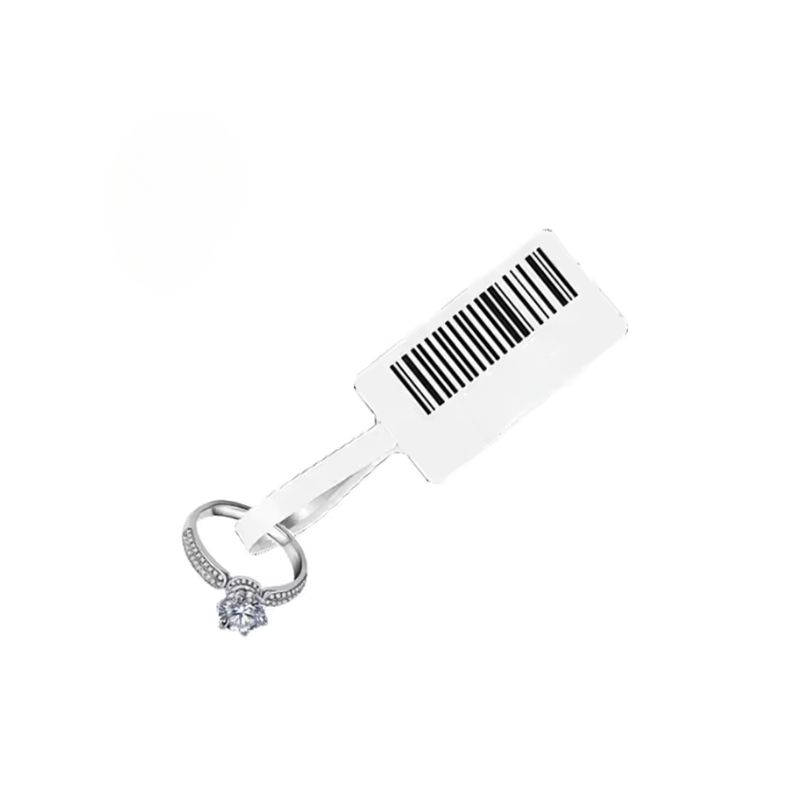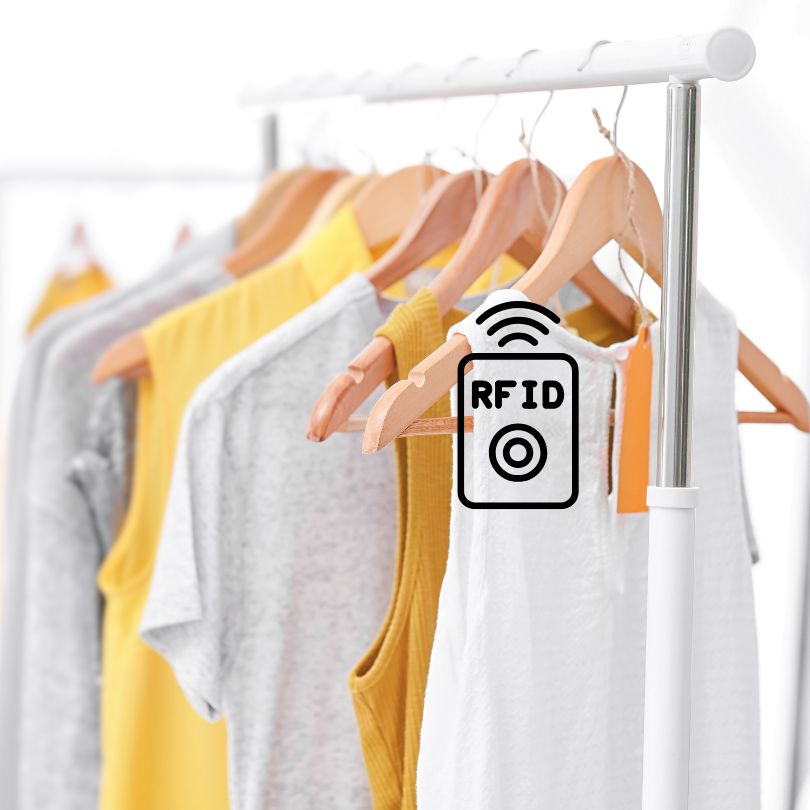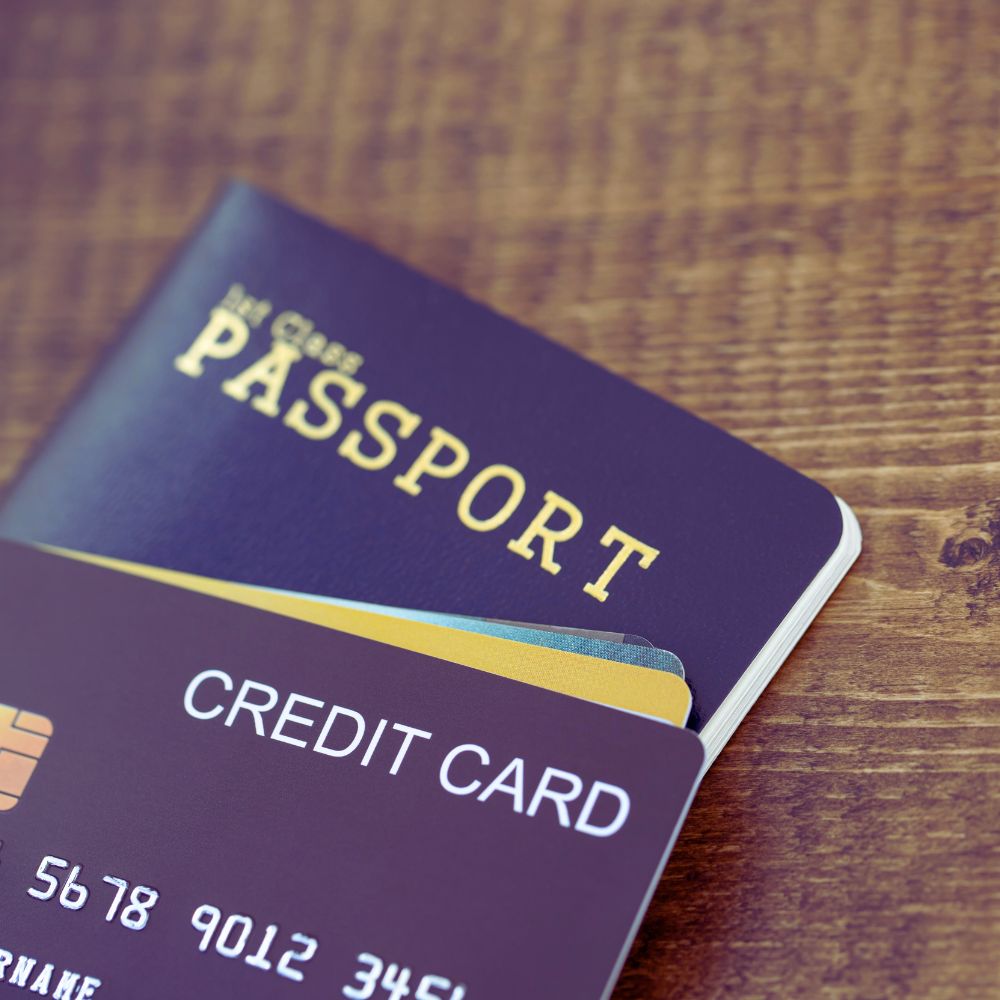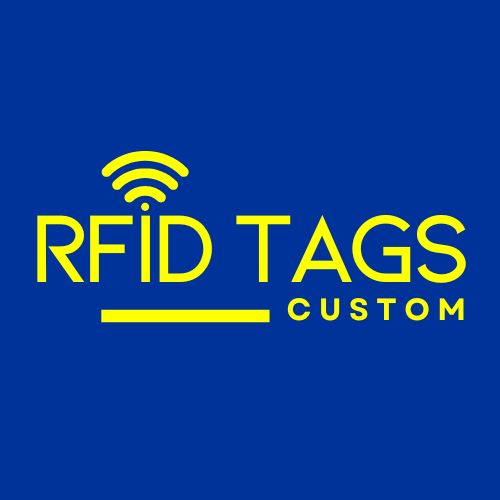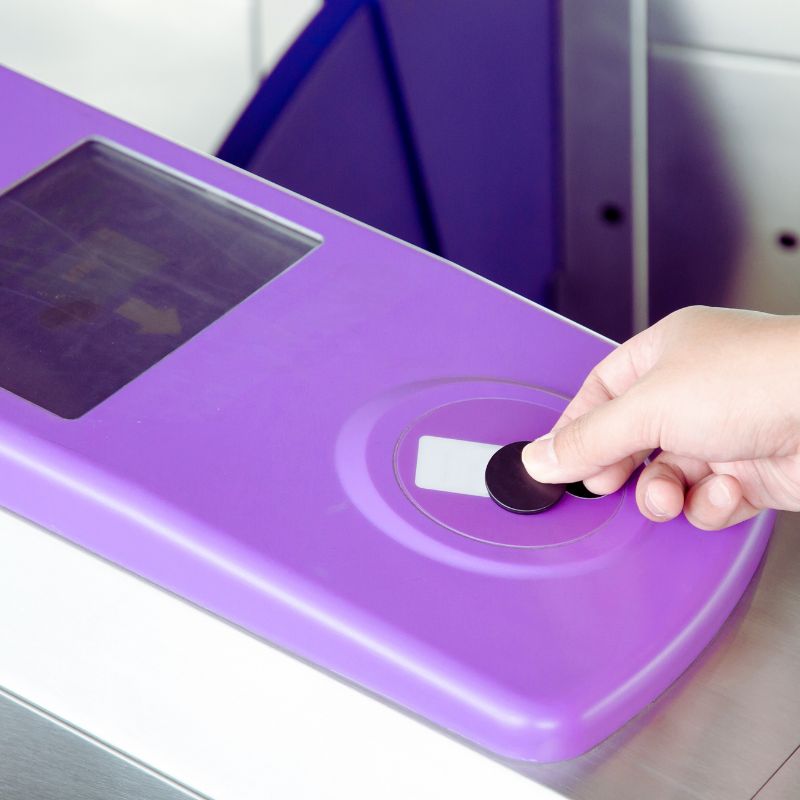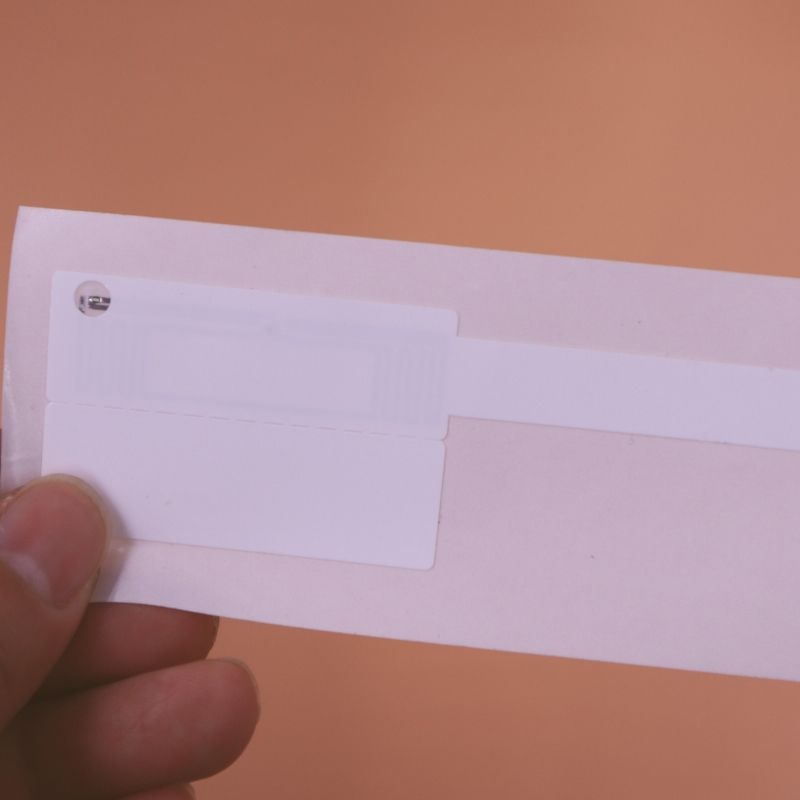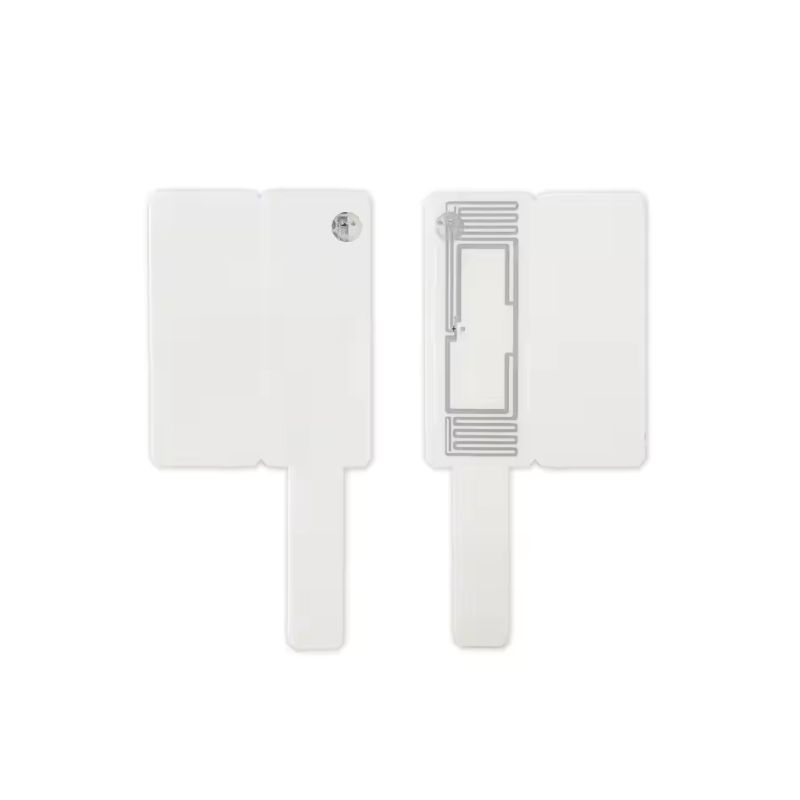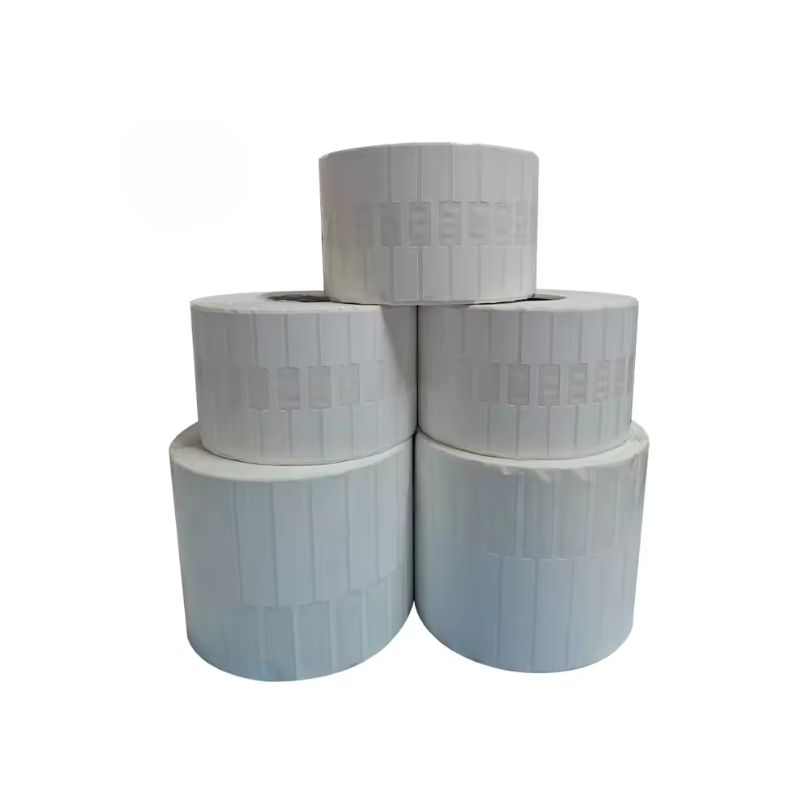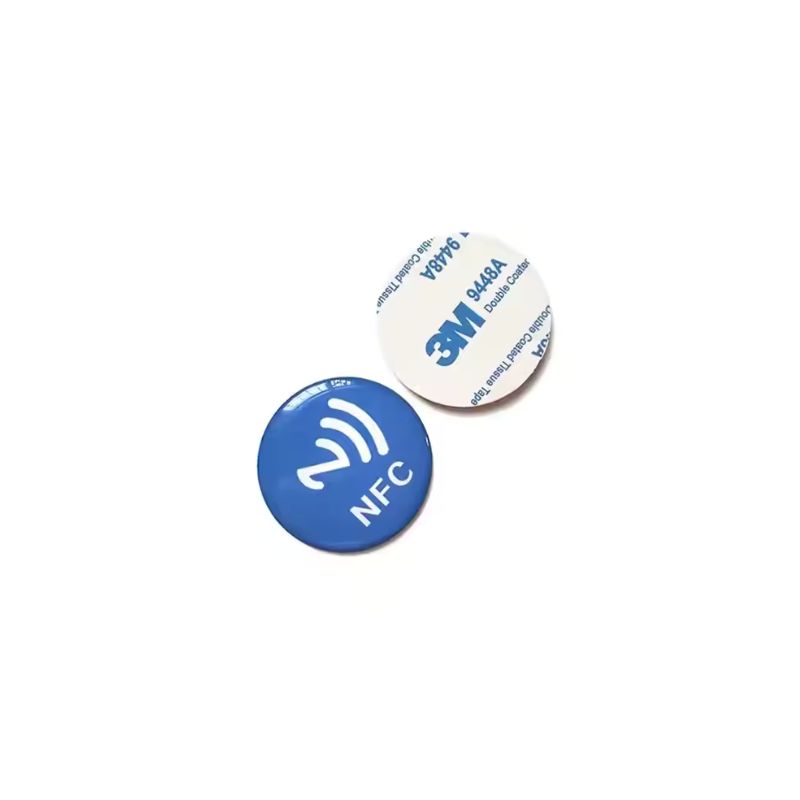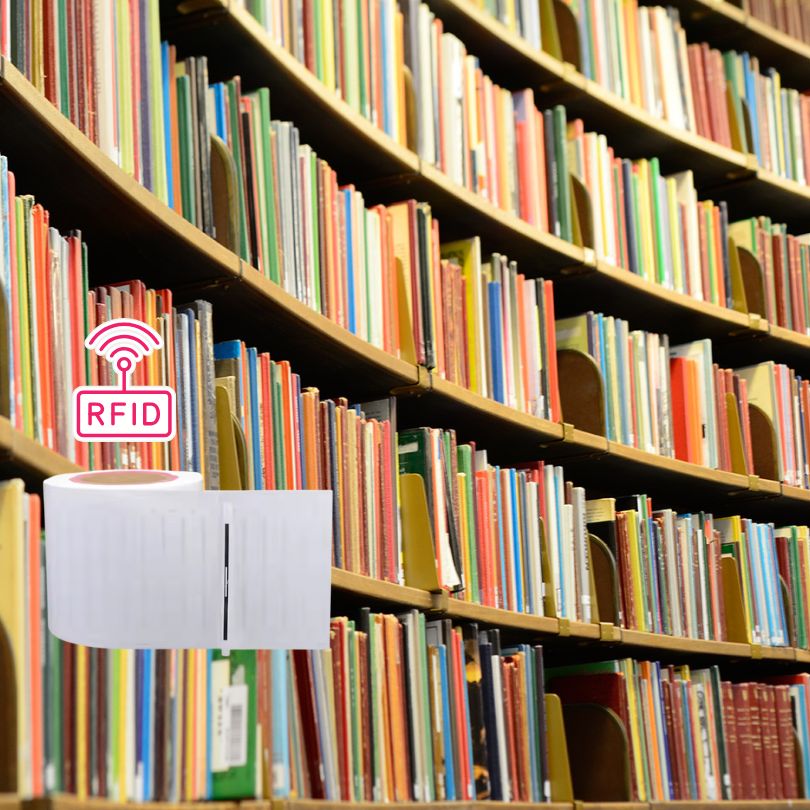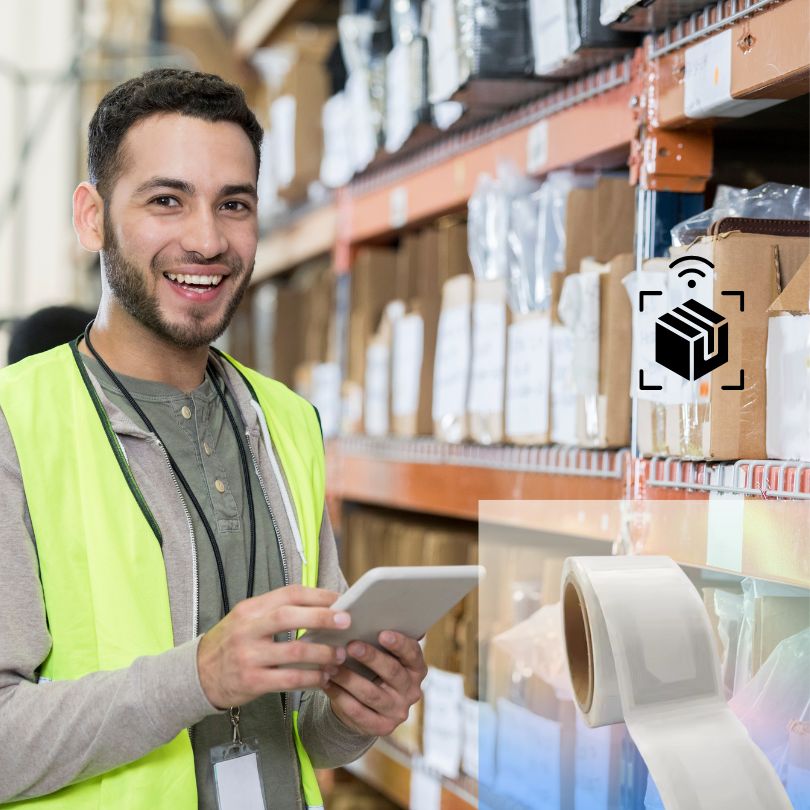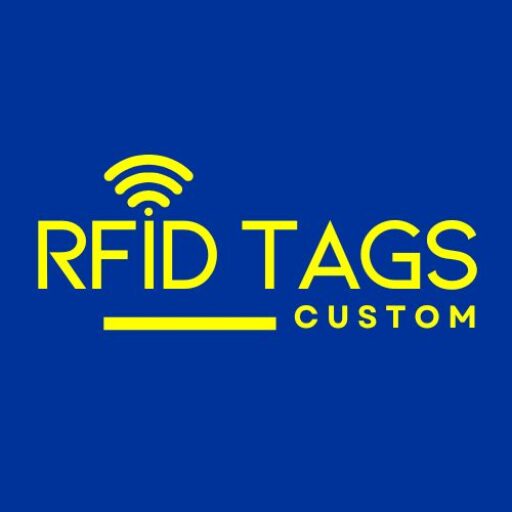RFID مقابل NFC: الاختلافات الرئيسية ولماذا يجب أن تهتم بها
إذا تساءلت يومًا عن الفرق بين تقنية NFC وتقنية RFID، فأنت لست وحدك. تستخدم هاتان التقنيتان القويتان في مجال الاتصالات الموجات الراديوية لإرسال البيانات إلى القارئ، إلا أنهما تخدمان غرضين مختلفين.
في هذه المقالة المتعمقة، سنستكشف الفرق بين تقنية NFC وتقنية RFID بالتفصيل، ونقدم لك رؤى واضحة حول نقاط تميز كل منهما وكيف يمكن أن يفيد عملك في تجارة التجزئة والخدمات اللوجستية وسلسلة التوريد والنقل وإدارة مواقف السيارات والتصنيع والرعاية الصحية وإدارة الأصول والأمن والزراعة وإدارة الثروة الحيوانية والتعليم وإدارة المكتبات والملابس والمنسوجات. في النهاية، سترى الاختلافات الرئيسية بين هذه الأنظمة، وتكتشف كيفية دمجها وتحديد النظام المناسب لعملياتك. إنه يستحق القراءة لأن الاختيار بين تقنية RFID وتقنية NFC يمكن أن يحسن العمليات ويعزز التحكم في الوصول ويشعل شرارة الابتكار في جميع حالات الاستخدام.
ما هو الفرق بين NFC و RFID؟
إذا سألت نفسك، "ما هو الفرق بين NFC؟" أو "ما هو الفرق؟" مع تقنية تحديد الهوية بموجات الراديو، أنت في المكان الصحيح. دعنا نحدد هذه المصطلحات أولاً:
- NFC (اتصالات المجال القريب):معيار لاسلكي يعمل بتردد 13.56 ميجاهرتز. وهو جزء من تقنية HF RFID التي تسمح بالاتصالات قصيرة المدى، عادةً في غضون بضعة سنتيمترات.
- RFID (تحديد الترددات الراديوية):تقنية لاسلكية أوسع نطاقًا تستخدم الموجات الراديوية لتحديد وتتبع العلامات المرفقة بالأشياء. RFID يكون التعرف على ترددات الراديو، والذي يشمل نطاقات مختلفة من الترددات (التردد المنخفض، والعالي، والتردد العالي للغاية).
تختلف تقنية NFC وRFID إلى حد كبير في نطاق القراءة ومصدر الطاقة وحالات الاستخدام المقصودة. تتطلب تقنية NFC جهازي NFC أو قارئ NFC وعلامة NFC قريبين للغاية من بعضهما البعض، مما يتيح الاتصال ثنائي الاتجاه. من ناحية أخرى، RFID مقابل NFC يمكن أن يكون نطاق القراءة في أي مكان من بضعة سنتيمترات إلى عدة أمتار، اعتمادًا على نوع RFID المستخدم. هناك فرق آخر بين NFC وهو أنه يتيح الدفع بدون تلامس باستخدام الهواتف الذكية وبطاقات NFC. في الوقت نفسه، يمكن استخدام تقنية RFID النموذجية لإدارة المخزون أو تتبع الأصول على مسافات أكبر.
حالة:وفقًا لمحللي الصناعة، من المتوقع أن ينمو السوق العالمي لأجهزة وحلول RFID بما يزيد عن 10% سنويًا، مدفوعًا بالطلب المتزايد على رؤية سلسلة التوريد والعمليات الآلية.
2. كيف تعمل تقنية RFID؟
RFID هي تقنية اتصالات لاسلكية تعمل على تحديد وتتبع العلامات باستخدام الموجات الراديوية. وفيما يلي شرح بسيط لكيفية عملها عادةً:
- يصدر قارئ RFID إشارات كهرومغناطيسية.
- تتلقى علامة RFID - سواء كانت علامة RFID سلبية أو نشطة - الإشارة. تعتمد الإصدارات السلبية على القارئ للحصول على الطاقة، بينما تعتمد الإصدارات النشطة على مصدر الطاقة الخاص بها.
- ثم يقوم العلامة بإرسال البيانات ذات الصلة إلى القارئ، والتي يمكن أن تكون أي شيء من رقم تسلسلي إلى بيانات مخزنة أكثر تفصيلاً.
غالبًا ما يتم تصنيف تقنية تحديد الهوية بموجات الراديو حسب نطاق التردد - التردد المنخفض أو التردد العالي أو التردد الفائق الارتفاع (UHF RFID). يأتي كل منها بقدرات مختلفة لنطاق القراءة، والذي يمكن أن يتراوح من بضعة سنتيمترات إلى عدة أمتار. هذا هو لماذا RFID يتم استخدامه في العديد من الإعدادات، بما في ذلك:
- إدارة المخزون (مثل مسح العناصر الموجودة في مستودع كبير)
- الموردين التحسين (لتتبع الشحنات تلقائيًا)
- التحكم في الوصول في مرافق آمنة أو مناطق وقوف السيارات المسورة
نظرًا لأن علامات RFID وقارئاتها تسمح لك بقراءة علامات متعددة في وقت واحد، فهي مثالية لمسح أعداد كبيرة من المنتجات. هذه القدرة على القراءة من مسافة بعيدة هي السبب وراء قدرة الشركات على قراءة العديد من المنتجات. قيمة RFID الحلول.
فهم تقنية NFC: هل هي جزء من تقنية RFID؟
عندما نقول أن NFC هي مجموعة فرعية من RFID، فإننا نعني أن NFC (اتصالات المجال القريب) تطورت من نطاق 13.56 ميجا هرتز المستخدم بواسطة RFID عالية التردد. هذا NFC تركز التكنولوجيا على الاتصالات قصيرة المدى. يمكن للأجهزة مثل الهواتف الذكية قراءة البيانات أو كتابتها بسرعة NFC واحد يمكنك تحديد العلامة ببساطة عن طريق النقر عليهما معًا.
تتشارك تقنية NFC وRFID في بعض السمات:
- يعتمد كلاهما على الاتصالات اللاسلكية باستخدام الموجات الراديوية.
- يمكن استخدام كليهما في المعاملات غير التلامسية أو التعريفات.
ومع ذلك، فإن تقنية NFC تمكن من الاتصال ثنائي الاتجاه من خلال السماح لكل جهاز NFC بالعمل كقارئ وعلامة. وهذا يجعل تقنية NFC مثالية للمهام اليومية مثل إقران الهاتف الذكي بمكبر صوت، أو إجراء الدفع بدون تلامس، أو نقل الصور إلى صديق من خلال النقر على الهواتف. وفي الوقت نفسه، تعمل تقنية RFID على تمكين الهواتف الذكية من الاتصال في الاتجاهين. يكون تقنية شاملة تتضمن كل شيء من سلاسل المفاتيح السلبية إلى تقنية UHF RFID المتقدمة للمسح بعيد المدى في المستودعات.
دراسة الحالة:في عملية طرح حديثة، قدمت إحدى عيادات الرعاية الصحية علامات NFC على سجلات المرضى للاسترجاع الرقمي الفوري. وقد أدى هذا النهج إلى تبسيط تسجيل دخول المرضى وخفض النفقات الإدارية.
لمزيد من الاستخدام المتخصص، راجع علامات RFID عالية التردديمكنهم مساعدتك في الرؤية كيف NFC وتتداخل تقنية تحديد الهوية بموجات الراديو (RFID) وتتباعد في السيناريوهات العملية.
4. ما هي الصناعات التي تعتمد على تقنية RFID و NFC؟
نظرًا لأن كل تقنية NFC تتألق في مجالات محددة، فليس من المستغرب أن تظهر عبر مجموعة متنوعة من الصناعات:
- بيع بالتجزئة:
- تساعد تقنية RFID في إدارة المخزون، وتبسيط عملية فحص المخزون بأكملها.
- يمكن لتقنية NFC تشغيل برامج الدفع غير التلامسية أو بطاقات الولاء داخل المتجر عبر بطاقات NFC.
- الخدمات اللوجستية وسلسلة التوريد:
- توفر تقنية RFID تتبعًا للشحنات في الوقت الفعلي، مما يؤدي إلى تحسين المسار بشكل أفضل.
- تستخدم بعض الشركات تقنية NFC لمسح بيانات الشحن الهامة.
- إدارة النقل والمواقف:
- استخدم ملصقات RFID على الزجاج الأمامي لتسهيل دفع الرسوم والدخول عبر البوابة.
- يمكن لتقنية NFC أن تسمح للسائقين بدفع رسوم ركن السيارة عن طريق النقر على هواتفهم الذكية على قارئ NFC.
- تصنيع:
- تساعد علامات RFID المصانع على مراقبة العناصر على طول خطوط الإنتاج وتقليل المسح اليدوي.
- يتم استخدام NFC في بعض الأحيان لإقران الآلات أو التحقق من استخدام الأدوات، على الرغم من أنه أقل شيوعًا من حلول RFID للتتبع على نطاق واسع.
- الرعاية الصحية:
- تساعد أساور RFID على تسهيل التعرف على المريض.
- يمكن لـ NFC التعامل مع عمليات تسجيل الدخول الآمنة للأجهزة أو تتبع عينات المختبر بسرعة (انقر لتأكيد البيانات).
- إدارة الأصول والأمن:
- تعتبر تقنية تحديد الهوية بموجات الراديو ضرورية لتتبع الأصول، وخاصة عبر المرافق الكبيرة.
- يمكن استخدام تقنية NFC للتحكم في الوصول إلى الأبواب الآمنة، مما يسمح للموظفين بالضغط على شارة الهوية.
- إدارة الزراعة والثروة الحيوانية:
- تساعد علامات الأذن RFID على تتبع صحة الحيوانات وموقعها فوق الأراضي الزراعية الكبيرة.
- يمكن استخدام تقنية NFC في بيئات المزارع ذات النطاق الأصغر لإجراء مسح سريع للبيانات على مستوى التغذية.
- إدارة التعليم والمكتبات:
- تساعد علامات RFID أو NFC الموجودة على الكتب في تسريع عملية الشراء والإرجاع.
- تمكن بطاقات الهوية الذكية المزودة بتقنية NFC من التحكم بسهولة في الوصول إلى المناطق المحظورة في الحرم الجامعي.
- الملابس والمنسوجات:
- تقوم العلامات التجارية بتضمين علامات RFID في الملابس لإجراءات مكافحة التزوير والتحقق من المخزون.
- يمكن أن تضمن علامات NFC الموجودة في الملابس الراقية أصالة المنتج للمستهلك.
تختار العديد من الشركات مزيجًا من تقنية الاتصال قريب المدى وتقنيات تحديد الهوية بموجات الراديو لتلبية احتياجاتهم. على سبيل المثال، قد تقوم بدمج علامات UHF RFID لعمليات المستودعات وفحص الجهاز للتحقق من صحة المنتج على أرفف المتاجر.
5. لماذا تعتبر العلامات مهمة جدًا في تقنيات RFID وNFC؟
العلامة هي القطعة الأساسية التي تحمل البيانات. يمكن أن تكون عبارة عن ملصق صغير أو بطاقة بلاستيكية أو حتى جهاز صغير متصل بجسم ما. تقنية تحديد الهوية بموجات الراديو وعلامات NFC، تخزن الذاكرة معلومات مهمة مثل:
- معرف المنتج
- الأرقام التسلسلية
- بيانات اعتماد الأمان
عندما يتعلق الأمر بتقنية NFC على وجه التحديد، يمكن لعلامة NFC تخزين أجزاء صغيرة من البيانات يمكن الوصول إليها بواسطة أي جهاز NFC مزود بإمكانية المسح الضوئي. وفي الوقت نفسه، يمكن لعلامة RFID الاحتفاظ بالبيانات التي يستخرجها قارئ RFID من مسافة بعيدة.
- يمكن قراءة العلامات حتى لو لم تكن في مجال الرؤية المباشر، على الرغم من أن تقنية NFC تتطلب عادةً اتصالاً وثيقًا.
- تتميز تقنية RFID بقدرتها على قراءة علامات متعددة في وقت واحد، مما يجعل العمليات واسعة النطاق أسهل بكثير.
في العديد من الأمثلة الواقعية، يكون الفرق بين علامات RFID وNFC ببساطة هو أن NFC يستخدم غالبًا للتفاعلات السريعة مع المستخدم، بينما يستخدم RFID غالبًا في عمليات المسح الأوسع. اعتمادًا على احتياجاتك، إذا كنت تبحث عن حلول قوية يمكنها تحمل البيئات القاسية، فقد تفكر في الحلول المتخصصة علامات RFID المعدنية أو مرنة علامات RFID.
6. هل هناك فرق بين RFID و NFC من حيث التحكم في الوصول؟
يعد التحكم في الوصول أمرًا بالغ الأهمية للصناعات التي تحتاج إلى تأمين المرافق أو حماية الأصول ذات القيمة العالية أو إدارة المداخل والمخارج. يمكن لتقنية NFC وRFID تلبية هذه الحاجة ولكن بأساليب مختلفة قليلاً.
- NFC في التحكم في الوصول:
- تُستخدم غالبًا في شارات المكتب التي تسمح للموظفين بالضغط لفتح الأبواب.
- مُحسَّن من خلال دعم جهاز NFC (فكر في (استخدام هاتفك كبطاقة مفتاح).
- نظرًا لأنه يتطلب اتصالًا وثيقًا، فهو يوفر أمانًا أعلى للبيئات المتخصصة.
- RFID في التحكم في الوصول:
- يوفر دخولاً بدون تلامس من مسافة أبعد قليلاً، خاصةً مع تقنية UHF RFID.
- من السهل قراءة علامات متعددة في وقت واحد، وهو ما قد يكون مفيدًا إذا دخل عدة موظفين إلى منطقة ما.
- قد يكون أكثر عرضة للقراءة غير المصرح بها إذا لم يتم تشفيره بشكل صحيح حيث يمكن في بعض الأحيان قراءة العلامات من مسافة بعيدة.
هناك فرق آخر بين تقنية NFC وتقنية RFID فيما يتعلق بالوصول، وهو مدى شخصية تجربة المسح الضوئي. تسمح تقنية NFC بالاتصال ثنائي الاتجاه، مما يعزز النهج التفاعلي (مثل فتح الأبواب باستخدام الهاتف الذكي). وفي الوقت نفسه، RFID غالبًا ما يركز النظام على استرجاع البيانات في اتجاه واحد (القارئ والعلامة الديناميكية). ومع ذلك، توجد أنظمة متقدمة حيث يمكن لأجهزة RFID التعامل مع تشفير الأمان على نحو مماثل لـ NFC.
يقتبس"لقد قمنا بتثبيت نظام RFID جديد للتحكم في الوصول إلى البوابة في مصنعنا. الآن، يتم التعرف تلقائيًا على كل مركبة عند اقترابها، مما يوفر علينا ساعتين من الفحص اليدوي يوميًا." — مدير العمليات، شركة التصنيع
7. مقارنة نطاق القراءة ونقل البيانات: أي خيار يناسبك بشكل أفضل؟
فيما يتعلق بـRFID مقابل NFC، فإن عامل الاختلاف الرئيسي الأساسي هو نطاق القراءة. بشكل عام:
- تقنية الاتصال قريب المدى:
- مدى قصير جدًا، عادةً ما يصل إلى 4 سم.
- يعمل على تردد 13.56 ميجا هرتز، وهو نفس التردد الذي تسميه بعض أجهزة RFID بـ HF.
- يسهل تبادل البيانات بسرعة بين جهازين على مقربة من بعضهما البعض، مما يسمح باتصال قوي في الاتجاهين.
- إنه مثالي للدفع بدون تلامس، أو نقل الملفات السريع، أو مسح علامة NFC على المواد الترويجية.
- تقنية تحديد الهوية بموجات الراديو:
- يمكن أن يتراوح من بضعة سنتيمترات (HF أو LF) إلى عدة أمتار (UHF RFID).
- يمكن أن يكون نقل البيانات عالي السرعة ولكن عادةً لا يكون تفاعليًا بنفس الطريقة التي يكون بها NFC.
- ممتاز لإدارة المخزون على نطاق واسع، وتتبع الأصول، وعمليات سلسلة التوريد، وذلك بفضل قدرته على قراءة علامات متعددة في وقت واحد عن بعد.
أيضا، فكر في كيفية بيانات أخرى غير RFID قد تختلف. تساعد تقنية NFC في إنشاء مصافحة حيث يتشارك كلا الجهازين المعلومات، لذا فإن الأمر لا يتعلق فقط بقراءة بطاقة هوية واحدة. وفي الوقت نفسه، تنقل تقنية RFID البيانات عادةً في اتجاه واحد من العلامة إلى القارئ. ومع ذلك، تسمح الحلول المتقدمة بإعادة الكتابة أو التحديث تقنية تحديد الترددات الراديوية ذاكرة العلامة. في النهاية، يعتمد اختيارك لـ NFC أو RFID على بيئتك. إذا كنت تريد تبسيط عملية الدفع في المتجر والسماح للعملاء بالدفع بسرعة باستخدام هواتفهم الذكية، فقد يكون NFC هو خيارك الأول. ولكن إذا كان لديك مستودع مزدحم يحتاج إلى تتبع في الوقت الفعلي على عدة أمتار، فمن المرجح أن تكون تقنية RFID هي الخيار الأفضل.
8. القيود الشائعة بين تقنية NFC وأنظمة RFID الأوسع نطاقًا
على الرغم من أن تقنية NFC توفر استخدامًا بديهيًا ومريحًا، إلا أن هناك قيودًا على تقنية NFC. إحدى النقاط الرئيسية هي أنها تعمل فقط في غضون بضعة سنتيمترات. وهذا مثالي للتفاعلات الشخصية مع الأجهزة أو مسح التذاكر عند البوابات الدوارة. لكنها أقل مثالية لمسح مئات العناصر على منصة نقالة من عبر رصيف التحميل.
غالبًا ما يمكن لتقنية RFID القراءة من مسافة بعيدة—خاصةً عند استخدام حلول UHF RFID. هذا النطاق الأطول مفيد في إدارة المخزون وسلسلة التوريد وتتبع الأصول على نطاق واسع. ومع ذلك، تتطلب تقنية RFID عادةً قراء متخصصين ولا يمكن دمجها بسهولة في الهواتف الذكية. مقارنةً بتقنية RFID، توجد تقنية NFC في عدد لا يحصى من الهواتف والأجهزة اللوحية، لذا فإن إعداد حل سهل الاستخدام يمكن أن يكون أبسط إذا كان كل شخص لديه بالفعل NFC واحد الجهاز في جيبهم.
حقيقة:لقد ارتفع إجمالي استخدام تقنية NFC بشكل كبير في السنوات القليلة الماضية بسبب قيام شركات تصنيع الهواتف الذكية بإضافة شرائح NFC مدمجة. يساعد هذا الاستخدام الواسع النطاق لتقنية NFC في دفع حالات استخدام جديدة في الحياة اليومية، مثل مسح علامة NFC في الإعلانات التفاعلية.
للمزيد تقنية RFID المتخصصة العلامات، فكر في استكشاف:
9. الاختيار بين تقنية RFID وتقنية NFC في عصر إنترنت الأشياء
لقد جعلت إنترنت الأشياء (IoT) تقنية RFID وNFC ذات أهمية كبيرة للاتصال. عند اتخاذ القرار بين تقنية RFID أو NFC أو مزيج منهما، ضع في اعتبارك ما يلي:
- نطاق القراءة المطلوب:هل تحتاج إلى نطاق قصير للتنصت شديد الأمان أو عدة أمتار لمسح العديد من البضائع في وقت واحد؟
- قابلية التوسع:هل تقوم بمسح مئات أو آلاف العناصر؟ إذا كان الأمر كذلك، فقد ترغب في استخدام حلول قراءة RFID القوية التي يمكنها قراءة علامات متعددة في ثوانٍ.
- مستوى الأمان: قد يكون NFC هو الحل الأمثل إذا كان سير عملك يتطلب تبادلات آمنة للبيانات (مثل الدفع غير التلامسي المشفر أو معلومات المريض الحساسة)وفي الوقت نفسه، يمكن لتقنية RFID أيضًا تنفيذ بروتوكولات تشفير قوية ولكنها معروفة عمومًا بالمسح أحادي الاتجاه.
- التكامل مع الأجهزة الموجودة:تدعم العديد من الهواتف الذكية المخصصة للمستهلكين بالفعل تقنية NFC. من ناحية أخرى، قد تحتاج أجهزة RFID إلى إعدادات أجهزة أو هوائيات متخصصة.
حالة صغيرة:قامت مؤخرًا إحدى شركات البيع بالتجزئة الكبرى للملابس والمنسوجات بدمج علامات NFC في خطوط الملابس المخصصة لكبار الشخصيات للترويج للتسويق داخل المتجر (يقوم العملاء بالضغط على العلامة للحصول على نصائح حول الأناقة) مع تقنية RFID للتحقق من المخزون الخلفي. وقد أدى هذا التآزر إلى تحسين تجربة المتسوق وتقليص أوقات إعادة التخزين بمقدار 30%.
يمكنك الجمع بين هذه الحلول لتحسين الأداء لأنها غالبًا ما ترتبط بالتفاعلات الصديقة للمستهلكين، بينما ترتبط تقنية تحديد الهوية بموجات الراديو بالمهام الصناعية أو اللوجستية. لا توجد إجابة "صحيحة" واحدة، ولكن أيًا من الخيارين قد يؤدي إلى مكاسب كبيرة في مجال الأتمتة والذكاء.
10. الأسئلة الشائعة: إجابات لأهم أسئلتك حول NFC وRFID
ما مدى أمان تقنية NFC للدفع ومشاركة البيانات؟
عادةً ما تحتوي تقنية NFC على تشفير مدمج واتصالات قصيرة المدى للغاية، مما يجعلها أكثر أمانًا. لا يستطيع المتسللون اعتراضها من بعيد لأن تقنية NFC تعمل فقط عندما تكون الأجهزة قريبة فعليًا.
هل يمكنني استخدام NFC لإدارة المخزون؟
على الرغم من إمكانية ذلك، إلا أنه لا يُنصح به عمومًا. تعد تقنية تحديد الهوية بموجات الراديو أكثر كفاءة لمسح عناصر متعددة. ومع ذلك، تعد تقنية الاتصال قريب المدى مفيدة للمسح الفريد مرة واحدة، وخاصة في التفاعلات مع المستهلكين.
ما هي الترددات التي تعمل بها علامات RFID؟
تعمل هذه التقنيات بترددات منخفضة وعالية (13.56 ميجا هرتز) وترددات فائقة الارتفاع (حوالي 860-960 ميجا هرتز). ولكل تردد خصائص فريدة تؤثر على نطاق القراءة والتطبيق. وتستخدم تقنية NFC على وجه التحديد تردد 13.56 ميجا هرتز، مما يجعل تقنية NFC جزءًا من تقنية HF RFID.
إذا أردت دمج كل من NFC و RFID، فهل هذا ممكن؟
بالتأكيد. يمكنك الجمع بين هذه التقنيات لأداء مهام مختلفة. على سبيل المثال، يمكن استخدام تقنية RFID للمسح الآلي في المستودعويمكن استخدام NFC للتفاعل بسرعة مع العملاء في مقدمة المتجر.
ما هي التقنية الأسهل للتكامل مع الهواتف الذكية؟
تقنية الاتصال قريب المدى يعد الأمر أبسط نظرًا لأن العديد من الهواتف تحتوي بالفعل على وظيفة NFC مدمجة لقراءة علامة NFC. غالبًا ما تحتاج تقنية RFID إلى معدات خارجية أو حافظات/ملحقات هواتف متخصصة.
هل يتعارض RAIN RFID مع NFC؟
تعمل هذه الأجهزة عادةً في نطاقات تردد مختلفة. تستخدم تقنية RAIN RFID تقنية UHF، مما يعني أنها قادرة على التعامل مع مسافات أطول من تقنية NFC. ونادرًا ما تتداخل هذه الأجهزة، لذا يمكنك تشغيلها بالتوازي إذا كان الحل الذي تستخدمه يتطلب استخدام كليهما.
ملاحظة حول RAIN RFID
قد ترى إشارات إلى تقنية Rain RFID في بعض القراءات. إنها عبارة عن تحالف عالمي يعزز اعتماد تقنية UHF (الترددات العالية للغاية) لتتبع مستوى العناصر في البيئات المفتوحة. يمكن لتقنية Rain RFID قراءة عناصر متعددة في وقت واحد من مسافة بعيدة، بينما تركز تقنية NFC على التفاعلات القريبة.
نقاط رئيسية يجب تذكرها
- NFC هي مجموعة فرعية من تقنية RFID، تعمل بتردد 13.56 ميجاهرتز للاتصالات قصيرة المدى. وهي مثالية للمهام غير التلامسية مثل المدفوعات أو تبادل البيانات الآمن.
- توفر تقنية تحديد الهوية بموجات الراديو ترددات متنوعة (بما في ذلك الترددات العالية والترددات العالية جدًا)، مما يتيح القراءة المتزامنة لعدة علامات ومناطق تغطية أكبر.
- تتشابه تقنية NFC وتقنية RFID، لكن كل منهما يناسب احتياجات مختلفة. تزدهر تقنية NFC في التفاعلات مع الأجهزة الشخصية، بينما تزدهر تقنية RFID في إدارة المخزون وتتبع الأصول والتحكم في الوصول.
- على عكس تقنية RFID، التي يمكن قراءتها من مسافة بعيدة، تتطلب تقنية NFC القرب. وهذا المستوى الأعلى من الأمان مثالي لبطاقات NFC أو تحديد الهوية عبر الهواتف الذكية.
- قم بتقييم بيئتك وحالات الاستخدام الخاصة بك. إذا كانت عملياتك تحتاج إلى مسح واسع النطاق، فقد يكون RFID هو الخيار الأفضل لك. إذا كنت تريد الراحة من خلال النقر والتنقل، فإن NFC هو الخيار الأفضل.
للحصول على حلول متخصصة، يمكنك استكشاف:
نشكرك على قراءة هذا الدليل المتعمق حول NFC وRFID. إذا كنت حريصًا على دمج هذه الحلول اللاسلكية في عمليات البيع بالتجزئة أو النقل أو الزراعة, تواصل معنا اليوم! نحن هنا لمساعدتك في التنقل بين جميع الخيارات، بدءًا من اختيار علامة RFID أو علامة NFC الصحيحة وحتى إعداد نظام RFID بأكمله. سيضمن خبراءنا أن يكون التنفيذ الخاص بك سلسًا وفعالًا ومستقبليًا.
- استخدم NFC إذا كنت تريد اتصالاً بسيطًا ثنائي الاتجاه عبر الهواتف الذكية أو بطاقات NFC.
- استخدم تقنية RFID إذا كنت بحاجة إلى مسح قوي من على بعد أمتار أو يجب عليك التعامل مع مهام إدارة المخزون على نطاق واسع.
- ضع في الاعتبار بيئتك المحددة وميزانيتك ومتطلبات الأمان.
- اجمع بين الاثنين إذا كنت بحاجة إلى الأفضل من كلا العالمين - NFC للتفاعلات الوثيقة والآمنة وRFID للمسح على نطاق واسع أو متوسط.
يسعدنا أن نسمع عن التحديات الفريدة التي تواجهك ونوضح لك كيف يمكن لهذه التقنيات أن تحول عمليات عملك. اتصل بنا الآن لرفع مستوى التحكم في الوصول لديك وتحسين سلسلة التوريد لديك وإحداث ثورة في تتبع الأصول.
